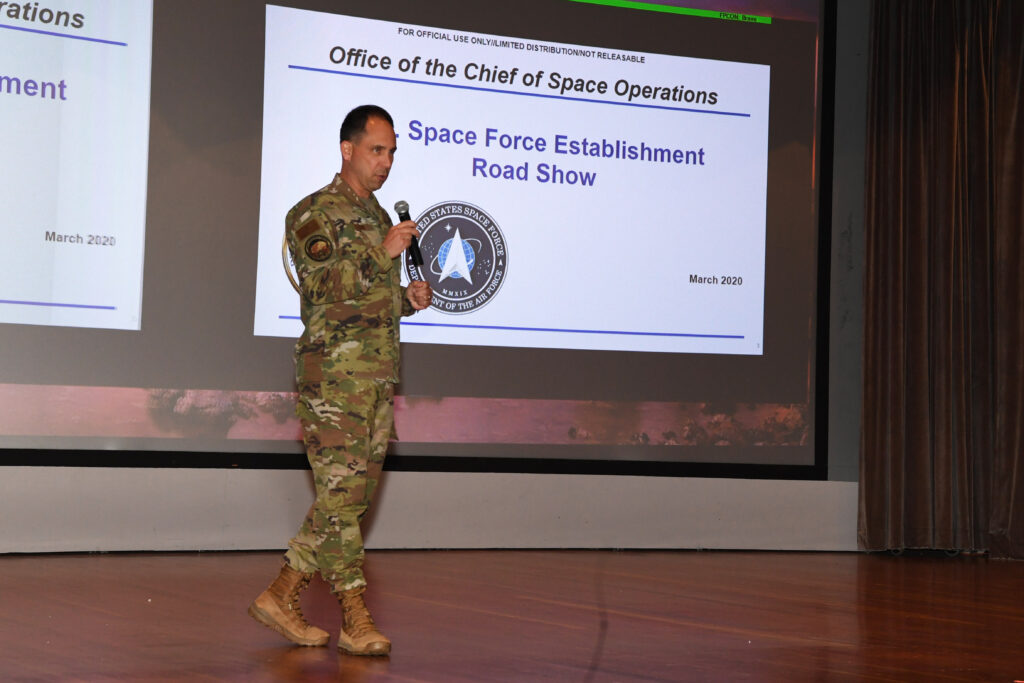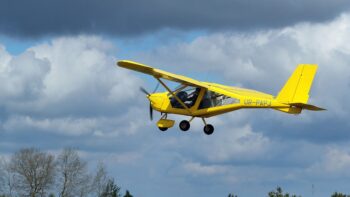
Maj. Gen. John Shaw
WASHINGTON: The Space Force expects a greater demand for situational awareness out to and beyond the Moon as human space activities increase, says Maj. Gen. John Shaw, who heads Space Operations Command for Space Force.
“Our need to continue good space domain awareness will will ever increase, as there’s more and more human activity, whether it’s NASA or its commercial tourism,” Shaw, who also commands the Combined Force Space Component for Space Command, said during a Space News webinar today.
Space domain awareness is the new catch-phrase for what the Air Force used to call “space situational awareness” — a change designed to reflect that fact that the US military needs not just good monitoring and tracking of space objects, but the ability to understand what adversaries might be up to with their space operations. As Breaking D readers know, Space Force chief Gen. Jay Raymond instituted the change last October.
And, as we’ve reported extensively, US national security space leaders have been increasingly vocal about their belief that the Space Force will need to increasingly keep an eye on the on-orbit activities of potential adversaries, especially China, in exploration of the Moon, Mars and asteroids as well as any plans for exploitation of those resources.
Shaw — who appeared alongside Brig. Gen. Douglas Schiess, who commands the 45th Space Wing, and Lt. Michael Thompson who commands the wing’s detachment for ground-base emergency operations — also said he envisions more support missions for astronaut rescue.
“I think as we continue forward, for as many years as humans go into space, there will be need to prepare for rescue. And someone’s going to have to do that, and it’s very likely, I think, the Department of Defense will be some part of that broader team in support to human spaceflight role.”
The Air Force long has been involved in helping NASA plan for crewed missions, with activities running the gamut from providing SSA data so launches can avoid satellites and debris; to managing the ranges at Cape Canaveral and Vandenberg AFB; to helping with astronaut training; to deploying ground support personnel to help with astronaut rescue.
What it has not done has been train to send military personnel into space to rescue other stranded or ailing astronauts.
That said, the Trump administration has made it a priority to encourage US commercial entities to push ahead with space resource extraction such as asteroid mining for rare Earth minerals. President Donald Trump on April 6 signed an executive order aimed at building a coalition of like-minded countries to support its policies.
This also has led some within the national security space community to push harder for the Space Force to prepare itself for a role in protecting US commercial interests in space, arguing that “flag follows trade.”
That said, US military officials must tread carefully as the US is a signatory (at least for the moment) of the 1967 Outer Space Treaty which bans military bases and maneuvers on the Moon or any other celestial body.
Speculation about Space Force intentions regarding human space flight also was piqued by the latest Space Force recruitment ad, released on May 28 and called “Make History,” that features a space-faring would-be recruit and seems to link service operations to human space exploration. The commercial led to a raft of speculative and confused comments on social media about whether Space Force now intended to launch people into space to undertake military missions.
For his part, Shaw sought to correct that impression.
“The United States Space Force is not going to be sending humans into space for national security purposes anytime soon,” Shaw said. “Maybe a long time from now we’ll be doing that but … not anytime soon,” he said. “We will be supporting any humans that go into space for for exploration in the way that was described here already today.”
“I think any images that you see in those commercials are meant to evoke an event horizon that transcends any of the boundaries we’re dealing with today, to really inspire the next generation,” he added.
Jordan’s Abdullah II defends shootdown of Iranian munitions over its airspace during attack on Israel
Amid Iranian criticisim, “Jordanian leaders have been very clear to portray their action as defensive and in protection of their own sovereignty rather than any act in support of Israel, and this is sincere,” an analyst told Breaking Defense.


























